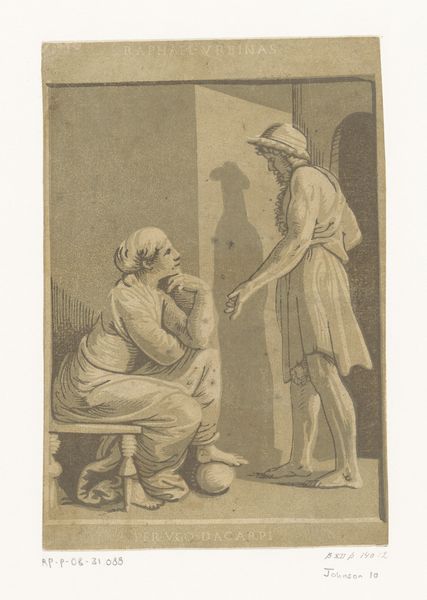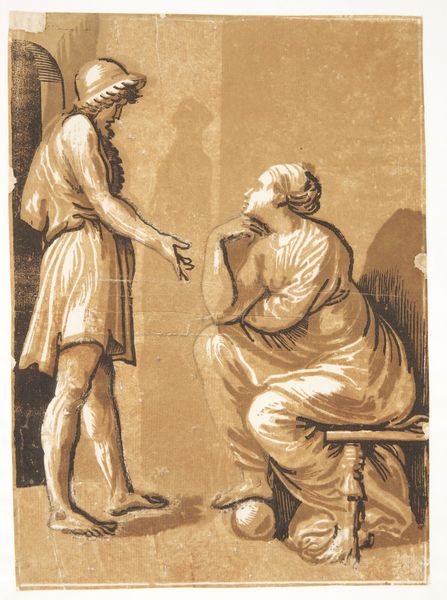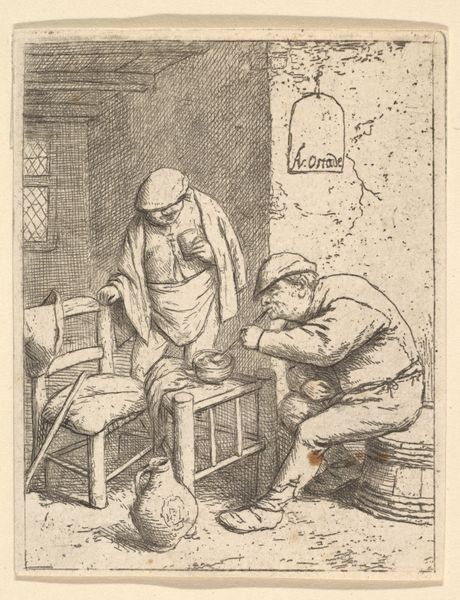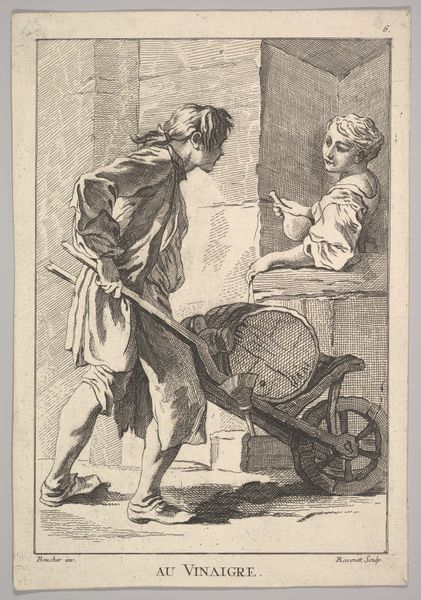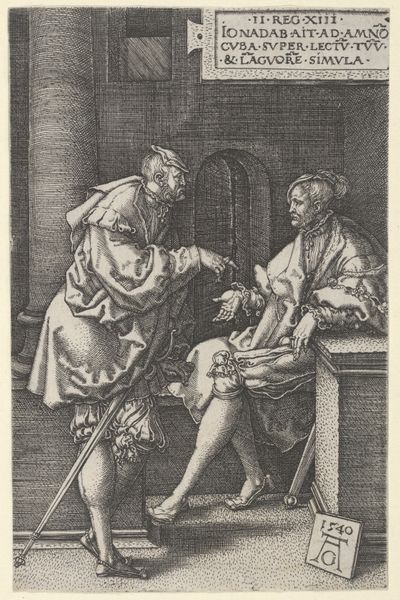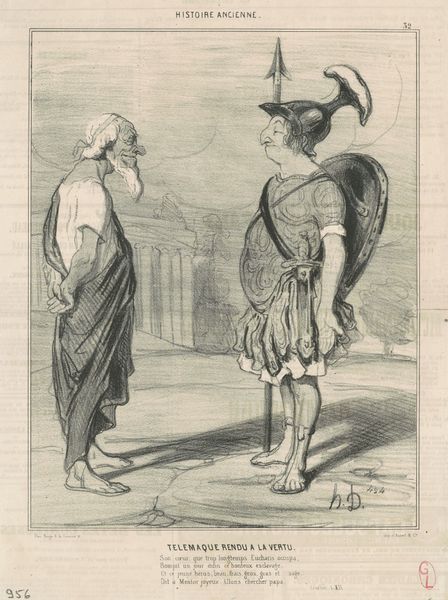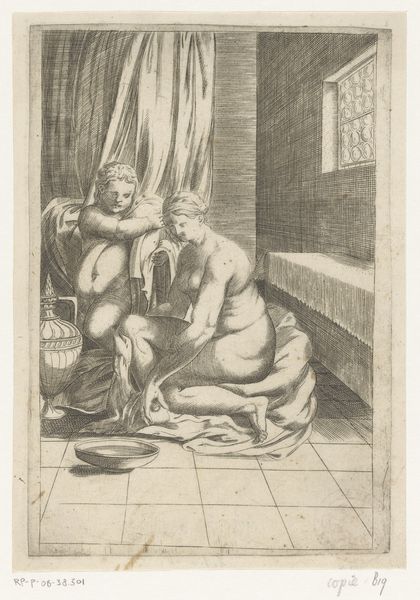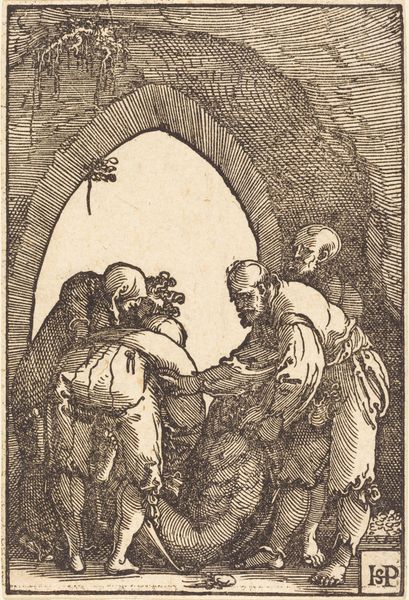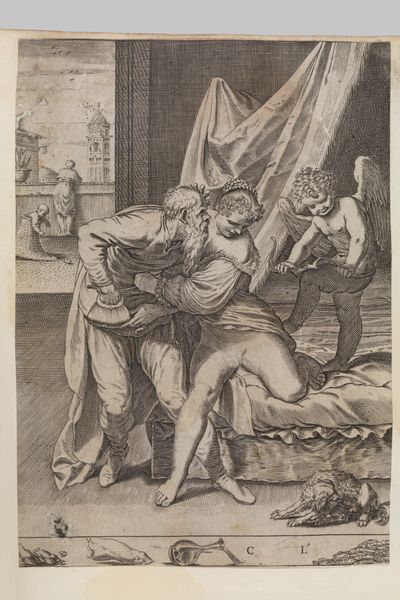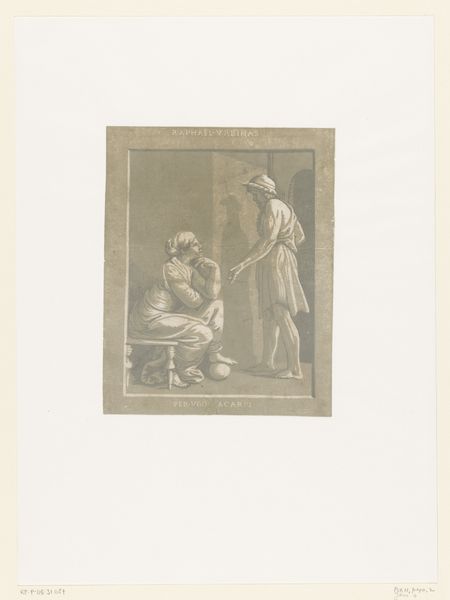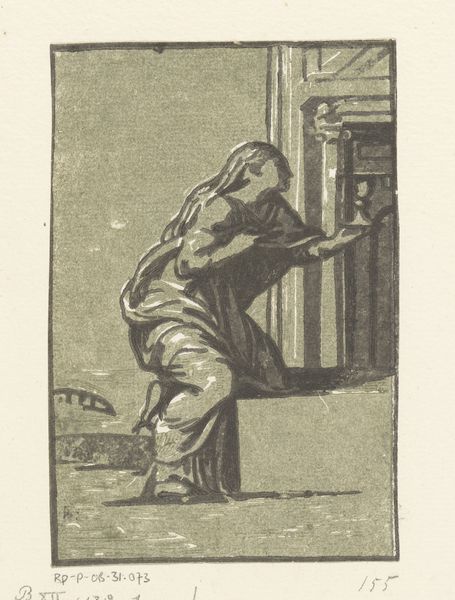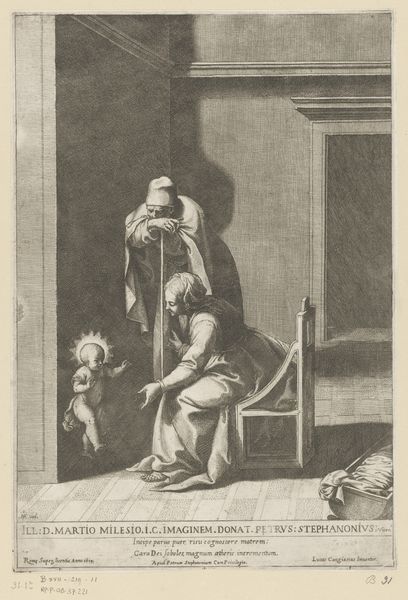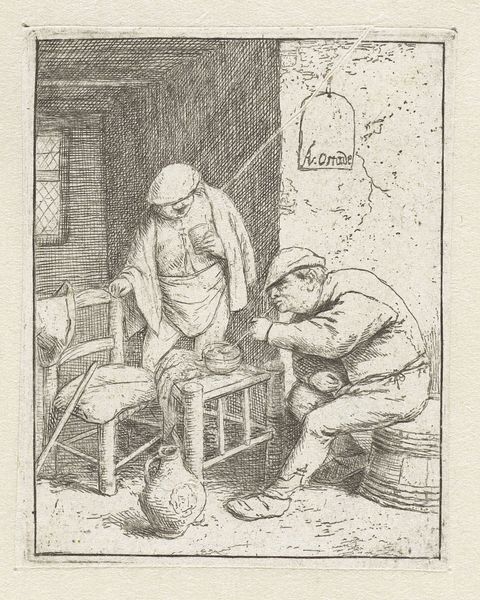
drawing, print, engraving
#
drawing
#
narrative-art
# print
#
figuration
#
mythology
#
italian-renaissance
#
engraving
Dimensions: sheet: 6 15/16 x 5 1/2 in. (17.7 x 14 cm)
Copyright: Public Domain
Editor: So, this is "Penelope and Odysseus" by Ugo da Carpi, made sometime between 1515 and 1525. It’s a print, an engraving, based on a drawing, and it depicts that very famous scene from Greek mythology. I find the muted tones surprisingly somber. What symbols jump out to you? Curator: Well, the immediate symbol that resonates is, of course, the contrast in posture. Penelope, seated, hunched, her face averted – embodies patience and sorrow. Odysseus, standing, presenting himself, is a symbol of return, but also of disruption. How do these stances communicate their emotional states, and more broadly, the psychological weight of their long separation? Editor: That's a great point! I hadn't focused on the body language as symbolic. I was caught up on things like the weaving, or lack thereof, since that's usually highlighted in depictions of Penelope. Curator: Notice, however, the stone ball under Penelope’s foot – a disruption to her stillness. Its roundness hints at completion, reunion, but also instability. Consider its placement: is it accidental, or a deliberate visual clue regarding their intertwined yet unsteady future? This circular form recurs with the arched doorway, a powerful motif of departure and return throughout art history. Editor: That makes so much sense! It’s almost like these motifs are little hints at different possible readings of their reunion. Curator: Precisely! Consider, too, how this image speaks to cultural memory. The story of Odysseus and Penelope has been retold and re-interpreted for centuries. Ugo da Carpi’s choices about how to represent them contributes to that ongoing cultural conversation. This seemingly simple scene contains echoes of enduring themes of longing, faithfulness, and the complexities of homecoming. The images shape our collective understanding. Editor: It’s amazing to think about how one image can hold so much symbolic meaning, adding layer upon layer through history. Curator: And, perhaps, prompting us to examine our own personal and cultural memories attached to similar stories and images.
Comments
No comments
Be the first to comment and join the conversation on the ultimate creative platform.
